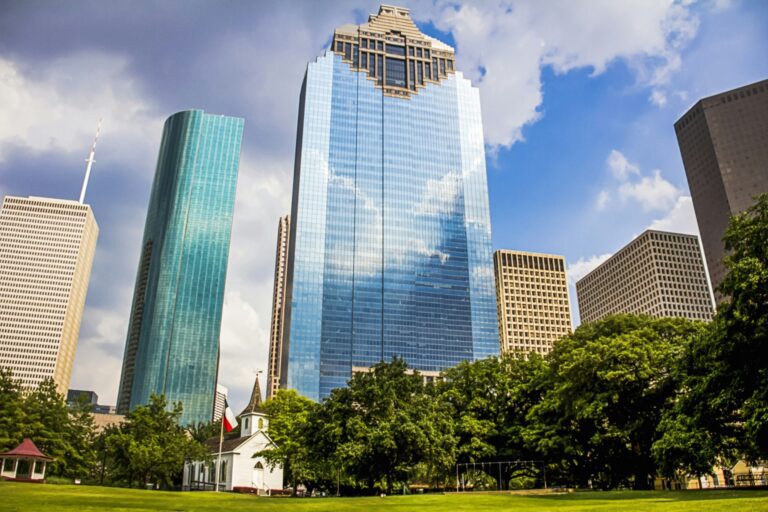Dallas is emerging as a leader in sustainable commercial property development, with a growing number of buildings designed to meet modern environmental standards. As businesses increasingly prioritize sustainability, the demand for energy-efficient office spaces is rising, prompting developers and landlords in Dallas to adapt to this new era of eco-conscious real estate. This shift marks a significant transformation in the city’s commercial property market, positioning Dallas as a hub for green building technologies and sustainable business practices.
The Rise of Sustainable Commercial Developments in Dallas
In recent years, Dallas has become a focal point for sustainable commercial development, with several high-profile buildings incorporating green initiatives. From energy-efficient office spaces to eco-friendly construction methods, these developments aim to reduce environmental impact while providing tenants with modern, comfortable workspaces. According to the Dallas Office of Environmental Quality, the city has seen an uptick in projects that prioritize sustainability, driven by both public policy and private sector demand.
One example is The Harvest Lofts, a newly completed office building in the Design District that features solar panels, green roofs, and high-efficiency HVAC systems. This development not only boasts energy-saving features but also incorporates sustainable materials, reducing its overall carbon footprint. Developers of such projects are increasingly prioritizing certifications like LEED (Leadership in Energy and Environmental Design) to appeal to eco-conscious tenants who value energy efficiency and environmental responsibility.
Additionally, The Southside on Lamar, a historic building transformed into office and retail spaces, has received recognition for its sustainable renovation. The project integrates energy-efficient lighting, low-water-use fixtures, and other sustainable technologies, demonstrating that even older properties can be adapted to meet modern environmental standards.
These developments are part of a broader trend in Dallas, as the city responds to growing demand for eco-friendly office spaces. With energy costs rising and businesses under increasing pressure to reduce their environmental footprint, sustainable commercial real estate offers a viable solution that aligns with both corporate social responsibility and cost-saving goals.
A New Era for Landlords and Tenants
As demand for sustainable office spaces grows, landlords in Dallas are increasingly offering green leases that focus on sustainability. These leases are designed to encourage both landlords and tenants to work together in reducing energy consumption and environmental impact. Green leases typically include clauses that incentivize tenants to adopt energy-efficient practices, such as reducing electricity usage, recycling, and investing in sustainable office equipment.
Landlords who invest in green building technologies are likely to attract top-tier tenants, particularly those in industries such as technology, finance, and law, where corporate responsibility and environmental impact are becoming central to their brand identity. These tenants are increasingly seeking out office spaces that align with their values, particularly in a city like Dallas, where companies are competing to attract the best talent.
In fact, a 2024 survey by the Dallas Chamber of Commerce found that 78% of businesses in the area indicated they would be more likely to lease office space in a building with high sustainability ratings. This reflects a broader trend in which tenants are prioritizing environmental responsibility, viewing it not only as a way to reduce operational costs but also as a way to enhance their brand’s reputation.
Moreover, the adoption of green leases can help landlords future-proof their properties. As environmental regulations become more stringent and energy standards continue to evolve, buildings that are already equipped with energy-efficient technologies will be better positioned to meet future compliance requirements, reducing the risk of costly retrofits down the line.
Lasting Effects on the Dallas Real Estate Market
The shift toward sustainable real estate is expected to continue shaping Dallas’s commercial property market in the coming years. As more businesses look for energy-efficient spaces, the demand for green buildings will likely rise, prompting developers to incorporate even more sustainable features into new projects.
Furthermore, the city’s focus on sustainability is likely to influence other industries beyond real estate. As businesses increasingly adopt green practices, the demand for renewable energy sources, eco-friendly office supplies, and sustainable transportation options will grow. This could lead to a broader shift in Dallas’s economic landscape, with green technology becoming a driving force behind the city’s development.
From a global perspective, cities across the U.S. and beyond are likely to follow Dallas’s lead, as the importance of eco-friendly solutions in real estate becomes more universally recognized. This trend is not just about reducing carbon footprints; it’s about creating more livable, resilient, and energy-efficient spaces for the businesses and people who inhabit them.
Conclusion
Dallas’s rise as a leader in sustainable commercial property development represents a significant shift in how the city approaches real estate and urban planning. As the demand for energy-efficient, eco-friendly office spaces continues to grow, landlords and developers are responding by incorporating green building technologies and offering green leases that promote sustainability. With businesses increasingly prioritizing sustainability, this trend is set to reshape the commercial real estate market, contributing to the city’s reputation as a hub for innovation and environmental responsibility. As green building practices become the standard, Dallas is poised to continue leading the way in sustainable development, setting a model for other cities to follow.
